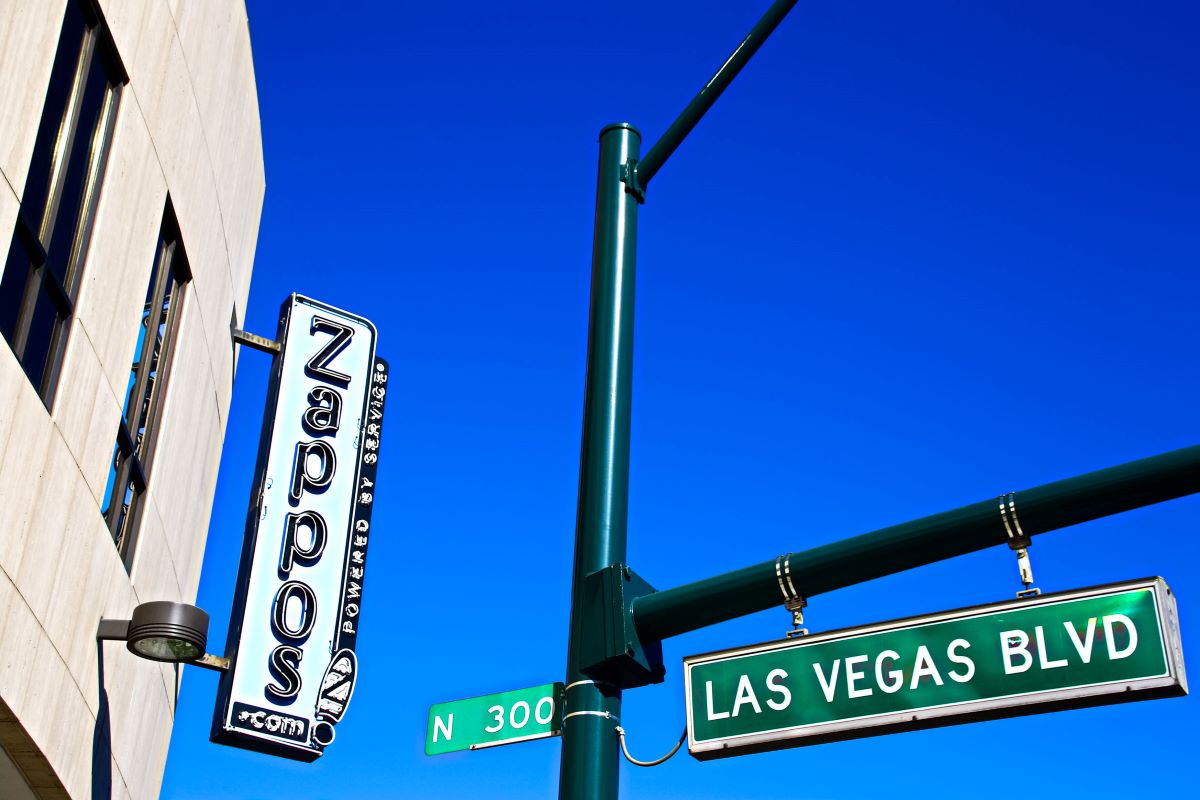4 inspiring takeaways about company culture from Zappos’ former chief
As many mourn the death of Tony Hsieh, the company is looking back at the lessons learned from the visionary. Consider these best practices for creating thriving workplaces.

Editor’s note: We are re-running the top stories of 2020 as part of our year-end countdown.
Zappos is carrying on the legacy of its former chief, Tony Hsieh, as the company celebrates his life.
Hsieh, who retired in August, died on Nov. 27 from injuries suffered in a house fire. He was 46 years old. The former executive and author of “Delivering Happiness” led Zappos to become a company recognized for its outstanding company culture, recognized on top workplace lists from Forbes, Fortune and more.
It is with very heavy hearts that we are sharing some very sad news, as we have learned that Tony passed away earlier today (11-27-20). The world has lost a tremendous visionary and an incredible human being. We recognize that…https://t.co/RUMNOFrItZ pic.twitter.com/NSAFGW8p4L
— Zappos.com (@Zappos) November 28, 2020
“Tony’s kindness and generosity touched the lives of everyone around him, and forever brightened the world,” said a statement from his family that was shared with CNN by Fazio.
… “Instead of mourning his transition, we ask you to join us in celebrating his life,” their statement added.
In the spirit of celebrating Hsieh’s life and accomplishments, consider these four lessons to building a flourishing workplace culture:
1. Become single-minded in your quest for an outstanding culture.
Hsieh eschewed the “leader” title, instead considering himself the designer of a company model that contained “the right environment, systems and conditions for employees to flourish”:
#tonyhsieh #quoteoftheday #zappos #companyculture #zapposculture #corevalues pic.twitter.com/wy4ZTPIhxQ
— Zappos Culture (@ZapposCulture) August 14, 2020
That’s because Hsieh understood the value of an organization’s culture—and you would be wise to do the same. O.C. Tanner’s 2021 Global Culture Report revealed that organizations with thriving cultures are weathering the COVID-19 crisis much better than organizations with no such structures in place:

Image courtesy of O.C. Tanner.
A thriving culture increases employee engagement, which in turn, helps communicators better strengthen their employer brand and more easily uncover compelling stories. Culture helps to both retain employees as well as attract top talent, and with more consumers purchasing from organizations that align with their values, culture can also affect your bottom line.
If you haven’t assessed your organization’s culture recently, consider making it a priority. Start by eliciting employee feedback with surveys and interviews, and ensure you have both buy-in and participation from executives early in your process. Come to the table armed with both data and strategies, so you can show the ROI of culture.
2. Empower your employees—even if that requires a new playbook.
In 2013, Hsieh began to establish a self-management and self-organization structure called “Holacracy,” which Zappos says gives “every employee (instead of just management) the power to innovate, make changes and have a voice.” By 2015, however, 15% of the company had yet to adopt the new structure—and some managers prevented employees from having the autonomy necessary under the model.
“What we found was that it was really hard for people to be half in one world and half in the other,” he said. “The default became falling back on habits, and so it hindered the whole adoption process.”
Upon realizing this, Hsieh sent an email to the entire company with an ultimatum: Adopt Holacracy by April 30 or take a three-month severance package and leave Zappos. The move resulted in 210 Zappos employees, or about 14% of the company, taking the offer.
You don’t have to establish the same structure within your organization. Instead, set goals and create strategies that empower your employees.
Start by examining and strengthening the relationships within your workforce, especially those your employees have with your managers, executives and other leaders. Especially during COVID-19 as employees grapple with uncertainty and many are working remotely, it’s crucial to consistently and transparently reach out and offer support. Empowering your employees can increase productivity and innovation—and it can also enhance loyalty and attract future talent.
3. Practice what you preach.
Hsieh sold his first company, which he started in college, due to a culture that clashed with his values.
What a lot of people don’t know, is that he sold it because he wasn’t happy going to work there anymore, because it didn’t align with his values, and it wasn’t fun anymore for him. In short, a set of core values by which his company operated had not been identified and therefore, the culture of the organization shifted to something he didn’t like.
Not only did Hsieh help Zappos establish an outstanding company culture, the success and appeal of its workforce values and employee engagement have become a gold standard among employee and internal communicators and business leaders. Now, Zappos offers up its culture takeaways as training, giving the company another revenue stream through Zappos Insights.
You can follow Zappos’ lead by backing up your statements and values with meaningful actions. One of the most timely and impactful ways you can do that is to follow up with your diversity, equity and inclusion commitments by outlining what you’ve done along with plans for the upcoming weeks and months. Invite your employees to be active participants and partners in these efforts wherever possible.
Learn more from Zappos’ outstanding culture with its work from home resources, which include takeaways from the company’s leaders on leading remote teams, tips for virtual culture and employee engagement, and Zappos’ blog packed with employee stories and culture insights.
4. Cultivate your organization’s “WOW.”
Zappos’ first core value is to “deliver WOW through service,” which is embedded in its communications and company culture as much as it’s a part of Zappos’ customer service goals.
To our amazing Customer Loyalty Team, thanks for always WOWing our customers! #customerserviceweek2020
😍
😉
🤩
😜
😎
🦄 #zappos #zapposculture #companyculture #cx pic.twitter.com/XnVQ54b9oc— Zappos Culture (@ZapposCulture) October 6, 2020
In a company blog post, Trish Christoffersen, a former writer and editor for Zappos, explained:
WOW is such a short and simple word, but it encompasses a lot of things. To WOW, you must differentiate yourself, which means do something a little unconventional and innovative. You must do something that’s above and beyond what’s expected. And whatever you do must have an emotional impact on the receiver. Zappos is not an average company, our service is not average, and we don’t intend for our people to be average. We expect every employee to deliver WOW.
Whatever your “WOW,” is, cultivate that competency and encourage your employees to join you in the pursuit. Don’t stop at threading this company value throughout your messaging. Ask employees to pitch in by brainstorming ways to further enhance it as well. For example, if social impact is your focus, seek new ideas to give back to your community as well as stories of your employees making a difference to your customers and beyond








If companies would have the vision to see what is best for their employees is best for the company , we would all benefit. Thanks Tony.